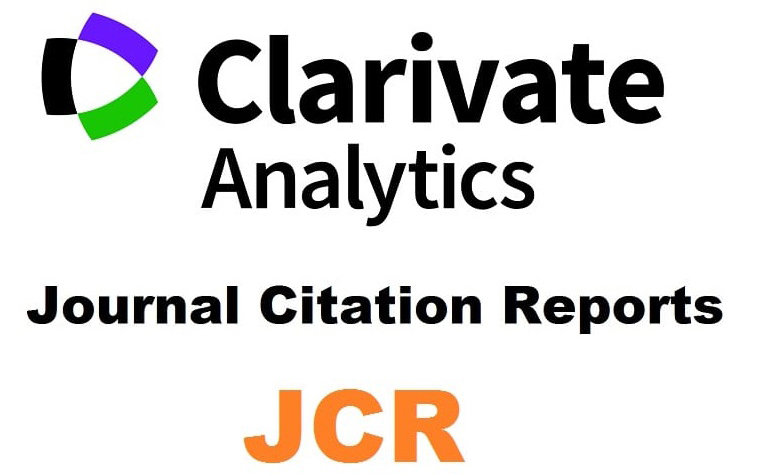Tácito y el ejército romano: el caso de los centuriones
Tacitus and the Roman Army: The Case of the Centurions
DOI:
https://doi.org/10.12795/i54.11Palavras-chave:
Tácito, centuriones, ejército romano, res militaris, legionario romanoResumo
Este trabajo analiza la figura del centurión en la obra de Tácito a partir del examen de las noticias recogidas en sus escritos sobre este cargo y su comparación con la caracterización llevada a cabo por otros autores que le precedieron, como Polibio, César, Salustio o Livio. El objetivo de dicho análisis es determinar si Tácito fue un mero continuador de los topoi de la tradición literaria con respecto a este grado del ejército romano o si, por el contrario, desarrolló, amplió y adaptó esos lugares comunes para ponerlos al servicio de los intereses de su obra.Downloads
Referências
Ash, R., Ordering Anarchy. Armies and Leaders in Tacitus’ Histories (London, Duckworth, 1999).
Aubrion, E., Rhétorique et histoire chez Tacite (Metz, Université de Metz, 1985).
Cadiou, F., L’armée imaginaire. Les soldats prolétaires dans les légions romaines au dernier siècle de la République (Paris, Les Belles Lettres, 1998).
Campbell, J.B., The Emperor and the Roman Army. 31 BC-AD 235 (Oxford, Clarendon Press, 1984).
Chilver, G.E.F., A Historical Commentary on Tacitus’ Histories I and II (Oxford, Clarendon Press, 1979).
Davies, R.W., “The Daily Life of the Roman Soldier under the Principate” [en D. Breeze y V. A. Maxfield eds.: R. W. Davies, Service in the Roman Army, Edinburgh, Edinburgh University Press, 1989], pp. 33-69.
Dobson, B., “The Significance of the Centurion and Primipilaris in the Roman Army and Administration”, ANRW, 2.1, pp. 392-434
Gómez de Caso Zuriaga, J., “Tácito y el legionario romano. Una aproximación a un perfil contradictorio”, Apulum, 44 (2007), pp. 113-126.
Hardy, E.G., “Tacitus as a Military Historian in the Histories”, JPh, XXXI (1910), pp. 123-152.
Haynes, H., The history of make-believe: Tacitus on Imperial Rome (Berkeley, Los Angeles, London, University of California Press, 2003).
Henderson, B.W., Civil War and Rebellion in the Roman Empire (London, Macmillan and Co., 1908).
Herzog, P.H., Die Funktion des militärischen Planens bei Tacitus (Frankfurt, Peter Lang, 1996).
Jal, P., “Le soldat des ‘Guerres Civiles’ à Rome à la fin de la République et au début de l’Empire », Pallas, XI (1962), pp. 7-27.
Jal, P., La guerre civile à Rome. Étude littéraire et morale (Paris, Presse Universitaires de France, 1963).
Kajanto, I., “Tacitus' Attitude to the War and the Soldier”, Latomus, 29. 3 (1970), pp. 699-718.
Keppie, L., The Making of the Roman Army. From Republic to Empire (London, University Oklahoma Press), 1998 [orig. London, Batsford, 1984].
Le Bohec, Y., El ejército romano. Instrumento para la conquista de un imperio (Barcelona Ariel, 2004) [orig. L’armée romaine sous le Haut-Empire, Paris, J. Picard, 1989].
Levene, D.S., “Warfare in the Annals” [en Anthony John Woodman, ed.: The Cambridge Companion to Tacitus, Cambridge, Cambridge University Press, 2009], pp. 225-238.
Matthews, J., “The Emperor and His Historians” [en John M. Marincola ed.: Companion to Greek and Roman Historiography, Blackwell Companions to the Ancient World, Oxford, Blackwell, 2007], pp. 290-304.
Mellor, R., Tacitus (New York-London, Routledge, 1993).
Mommsen, T., Römische Geschichte. Fünfter Band. Die Provinzen von Caesar bis Diokletian (Berlin, Weidmannsche Buchhandlung, 1886).
Olshausen, E., “Tacitus zu Krieg und Frieden”, Chiron, XVII (1987), pp. 299-312.
Palao Vicente, J.J., “Virtus centurionis. La figura del centurión en César”, Gerión, 27 (2009), pp. 191-206.
Parker, H.M.D., The Roman Legions (Chicago, Ares Publishers Inc., 1985, reimp. orig. Oxford, 1923, with the corrigenda of 1958).
Perea Yébenes, S., El ejército romano en Egipto (Madrid, Editorial Dilema, 2020).
Phang, S.E., Military Service in the Roman Army. Ideologies od Discipline in the Late Republic and Early Principate (New York, Cambridge University Press, 2008).
Roth, J., “The Size and Organization of the Roman Imperial Legion”, Historia. Zeitschrift für alte Geschichte, 43 (1994), pp. 344-362.
Saddington, D.B., “The Roman auxilia in Tacitus, Josephus and other early imperial writers”, Acta Classica, XIII (1970), pp. 89-124.
Saddington, D.B., “Tacitus and the Roman Army”, ANRW, 33.5 (1991), pp. 3484-3555.
Saller, R.P., Patriarchy, Property and Death in the Roman Family (Cambridge, Cambridge University Press, 1994).
Syme, R., Tacitus (Oxford, Oxford Clarendon Press, 1958).
Thorburn, J.E., “Lixae and calones: Following the Roman Army”, CB, 79 (2003), pp. 47-61.
Villalba Álvarez, J., “Estudio léxico del pueblo en Tácito: uulgus, plebs, populus”, AEF, XVIII (1995), pp. 533-549.
Vishnia, R.F., “The Shadow Army: the Lixae and the Roman legions”, ZPE, 139 (2002), pp. 265-272.
Wacher, J., “Britain 43 B.C. to A.D. 69” [en A. K. Bowman, E. Champlin, A. Lintott eds.: The Cambridge Ancient History. X. The Augustan Empire, 43 B.C. – A.D. 69 (Second Edition), Cambridge, Cambridge University Press, 1996], pp. 503-516.
Wellesley, K., “Tacitus as a Military Historian” [en Thomas Alan Dorey, ed.: Tacitus, London, Routledge & Kegan Paul, 1969], pp. 63-97.
Zecchini, G., Cesare e il mos maiorum (Stuttgart, Franz Steiner, 2001).
Downloads
Publicado
Como Citar
Edição
Seção
Licença
Las ediciones impresa y electrónica de esta Revista son editadas por el Secretariado de Publicaciones de la Universidad de Sevilla, siendo necesario citar la procedencia en cualquier reproducción parcial o total.Salvo indicación contraria, todos los contenidos de la edición electrónica se distribuyen bajo una licencia de uso y distribución “Creative Commons Atribución-NoComercial-SinDerivar 4.0 Internacional”








